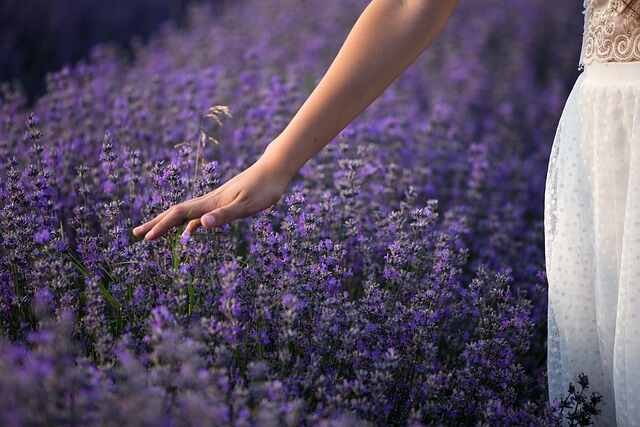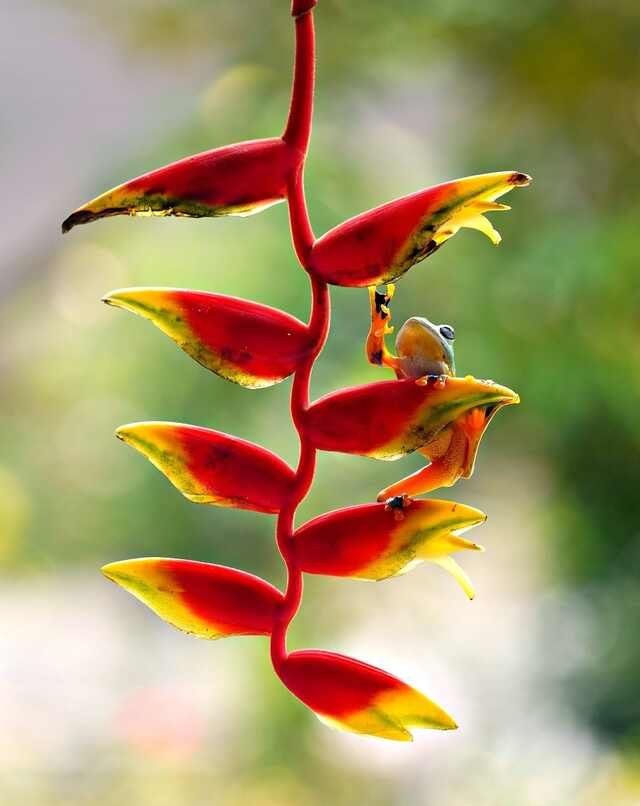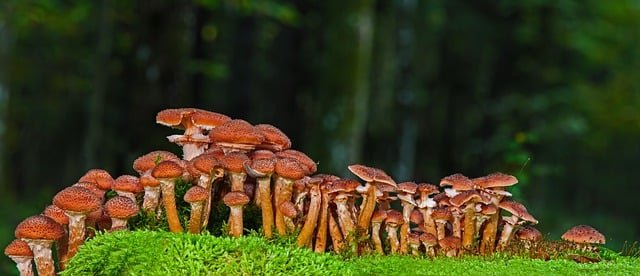What is going on, everyone? Welcome to another very exciting episode right here. Lavender is, and so in today’s episode, I’m going to share with you everything that I know on how to maximize the growth of your lavender, to take it from probably a C grade to an A plus grade lavender plant. Let’s go!
So, I am takeing one lavender bush, and believe it or not, this is one plant. This is absolutely incredible because the fact that this looks like it’s probably two or three plants. Now, this plant we’ve been growing for about the past three or four years now in the garden, and every single year it doubles in size. Now, there will come a time where it will kind of stop growing, but what we’ve done to encourage the growth, encourage the amount of blossoms we have here are quite a few things.
The first thing that you can do is pick the right variety. So, pick the right variety. This variety is known as Munstead. Munstead is a very bushy variety, it’s not going to be quite as compact as, say, like your Vera lavender or your common English lavender. And so, we have some common English over there, it’s looking beautiful, but you’ll notice even though they’re about the same size, same age plant, they’re much more compact. The flowers look dramatically different as well. It’s a totally different variety of lavender. So, picking a variety like this Munstead will make a huge difference to how big it can get. And let me tell you, yeah, it smells. There is no acting here, the smell is actually intoxicating. The amount of honeybees that are on here, the amount of just—it smells so amazing, you guys, you have to try this. So, pick the right variety, that’s going to make the biggest difference because if the genetics don’t justify a larger, bushier plant, you could do everything right that I’m going to explain that in this episode, and you’re not going to get a bigger, bushier plant. So, the first thing, pick the right variety. Alright, the second thing that I do to guarantee a huge lavender plant is actually prune. Now, pruning, you might think, is counterproductive to getting a huge plant because how do you have a huge plant if you’re making it smaller? Well, that’s because lavender only flowers on first-year growth. That means all of this is new growth that it’s flowering on. And how do I do that? Well, I do that through pruning. So, what you’ll notice is coming in here, all of this growth is actually really, really long. The center of the plant, it’s not like an oregano plant or like a tomato plant where, you know, wherever it sets down, wherever it touches soil it’s going to root, right? It’s not a mint plant either, it’s actually a woody bush. And so, the center of the plant is right in the smack dab of this. The center of this plant here, and it’s grown out from there. But what happens if it gets too long, it gets too lanky? It actually will have a hard time generating energy and new growth. So, what’s really important is in the fall, not right now, but I’ll prune a couple just to kind of give you guys an example. But in the fall, what we’ll do is after the flowers are all done, we’ll come in here and we’ll actually prune out about a third of this plant. Thirty percent of this plant will get pruned back towards the center of the plant. That will encourage all new growth, which will then actually increase the overall health of the plant and the overall growth, which increases the amount of flowers you get. Alright, so pruning will also increase the overall healthier plant. You’ll notice here all this dead growth, that’s actually last year’s growth. And all that foliage is actually starting to have powdery mildew on it because it’s just rotting away. See this is what I pruned away. This is the really thick, old growth, and it comes out here to last year’s growth and then this year’s growth. But if you don’t want to have a lot of flowers, well, keep the whole plant, it’ll look really big, but eventually, it’s going to die. If you want a lot of flowers, you actually have to properly maintain your plant. And that sometimes means pruning off some of this stuff. Because if you get too much of this dead growth, what it does is actually causes center rot. And that center rot is all that plant material that starts rotting away, creates disease, and a diseased branch cannot possibly create new growth. So yes, we sacrificed a little bit of this prettiness for actual overall health. Now again, we probably would wait till after the flowers are done because they’re already forming. But as an example, this is what we’re going to do to the whole plant after they’re done flowering.
Alright, the third thing that we do to guarantee a huge lavender plant is we actually fertilize. Now, it goes without saying that the more you fertilize, the more you feed your plant, the healthier and bigger it should be. But the times that you fertilize and how you fertilize does make a huge difference to the overall plant health and how many flowers you’re going to get. Now, how we fertilize is in the spring we fertilize with Trifecta. We fertilize twice a year. The first time we fertilize is with Trifecta. We use Trifecta in our garden through every plant, it doesn’t matter if it’s a flower or vegetable, that’s just what we use. But use what you have on hand, what you’ve come to know and love, something that has lots of nitrogen. Because in the spring when we fertilize with nitrogen, the goal is to get the plant out of dormancy, to get it growing very fast. And when it grows really fast, all of that new growth is what it’s going to flower on. Remember, lavender flowers on first-year growth. And so, we want to get lots of new growth to encourage lots more flowers. But then after the flowers are done, when the plant is kind of getting ready for winter, we follow up with a second fertilizing. We don’t fertilize mid-season, we don’t come back with a bloom booster and all this other scientific mumbo jumbo. We literally keep it super simple. All we do is we fertilize a second time about a month or two before our first frost date with, again, Trifecta. Now, why Trifecta again? That’s what we use, it’s what we’ve come to know and love. But it’s also very high in potassium. It has fast-acting and slow-release potassium. So that overall helps the winter hardiness of a perennial. There have been many studies that have shown that yes, phosphorus will help with seasonal growth, with flowers, and root development. A
lot of gardeners turn to phosphorus. However, phosphorus is not necessarily something that your plant needs for winter hardiness. Winter hardiness has more to do with potassium. And so, when you feed your plant lots of potassium, it’s going to help them overwinter better. Which helps them set themselves better up, helps them set themselves better for spring. And so, when they’re set better for spring, they’re going to grow faster in the spring, they’re going to flower more in the summer, and then the whole cycle happens all over again. And so, we fertilize about a month or two before fall or before first frost with a high potassium Trifecta. We add that to the base of the plant and we basically just use a trench fertilizing method. We basically pull the foliage up, we dig a small little trench about an inch deep, sprinkle the Trifecta around the base of the plant. For a plant of this size, we’ll use about a quarter cup of Trifecta. And then we simply scratch it in, we water it in well, and that’s all we do. So, fertilizing does make a huge difference.
Alright, the fourth thing that we do is watering. We actually do not water. Now, this could seem crazier, I know everything else in the garden loves lots of water, especially in mid-summer. However, lavender does not like water. It’s a very arid-loving plant. Now, lavender is grown in the Mediterranean regions of the world, so it’s very arid. It has lots of sandy soil, lots of well-draining soil. It’s also very fertile, but they don’t get lots of rain. There’s periods of the growing season where they might not get any rain for a month or two. And the same goes for this lavender. We do not water this lavender. Anything that it gets is from the rain. And so, from the very beginning of the season, this lavender has not had a drop of water from me watering this plant. And what you’ll notice is that actually encourages an overall healthier plant. Well, the thing is, a lot of gardeners will come in and they will actually water their lavender, and they think that their lavender needs the water to grow and to thrive and to be happy like the rest of their garden. The problem is that often leads to root rot. It also exacerbates that center rot that we talked about with pruning. That excess moisture actually—it actually increases the likelihood of that foliage rotting and molding, which then increases the disease on the plant. And that ends up stressing the plant, which causes it to look spindly, have a lot of dead patches, and it actually will fruit or not fruit, but flower a lot less. And so, it’s super important that you keep your plant as dry as possible. Now, this is here in Michigan, it is different, your plant may need some water if you’re growing it in, like, Arizona. But again, an arid environment is what this plant loves. If you have the right type of soil and assuming it is getting some water, not just no water ever, it’s going to do great. So, we rely on the rain to water this plant. The last time it rained, it was about a week ago. So, it’s gone about a week without any water. And then prior to that, it went about four weeks without any rain. So, it is getting periodic water. As long as it’s getting that sporadic water, the soil is literally, we’re talking bone dry, and that’s fine because there’s moisture deep down in the soil. And the plant is so large that it’s actually acting as kind of a living mulch. It’s protecting the moisture near the plant, it’s getting some moisture because it’s clearly not dying.
Alright, the fifth and final thing that is kind of an obvious one is the soil. Now, the soil is super important because if you don’t have the right type of soil, everything else could go right with the exception maybe picking the right variety. And everything else could go right, and if you don’t have the right type of soil, your plant is not going to thrive. And the reason why is going back to what I talked about with the fourth part of having a very arid environment, right? Not watering. Well, here’s the thing, if you have the wrong type of soil, you’re going to really have a plant that’s going to be struggling. A great deal of grounds-keepers plant lavender in soil that has a ton of earth or sand in it. Expecting it’s very profound sand or uncommonly significant mud, those two creating conditions are not ideal for creating lavender since lavender relies upon moistness where it includes in the soil. Moreover, on the off chance that it holds a lot of dampness, as dirt does, root decay, over the top watering, and lacking air circulation in the dirt are potential results. The plant will be worried, the roots will spoil, and it will not develop so a lot or bloom so a lot. If it’s too sandy, the soil will dry out something over the top, the plant will truly encounter the evil impacts of parchedness, you will water a large part of the time, and there will be an issue there, right? Our lavender doesn’t require watering since we rely upon surprising soil. Over the soil we have here, we apply unadulterated excrement. Regardless, as stated previously, their bone-dry climate supports excellent soil, is that correct? Thus, the dirt in a ton of the Mediterranean has wonderful, rich volcanic soil, a great deal of old ocean beds, riverbeds, and different things appreciate that that add a ton of fruitfulness. It’s simply — going dry is permitted. As, it’s essential to have the right kind of soil since, supposing that you don’t have that, you won’t have a solid plant by and large. Thus, that goes with everything in the nursery however,a solid soil biology is what’s significant.
So, that’s everything we do to guaranteeing a huge lavender plant. I hope you guys enjoyed, I hope you learned something new, and I really hope that you will cut some lavender, put it in your window, and smell the lavender every single day that it’s there because it is such a beautiful plant to be growing. I hope you guys enjoyed, hopefully, you’ll learn something new.



